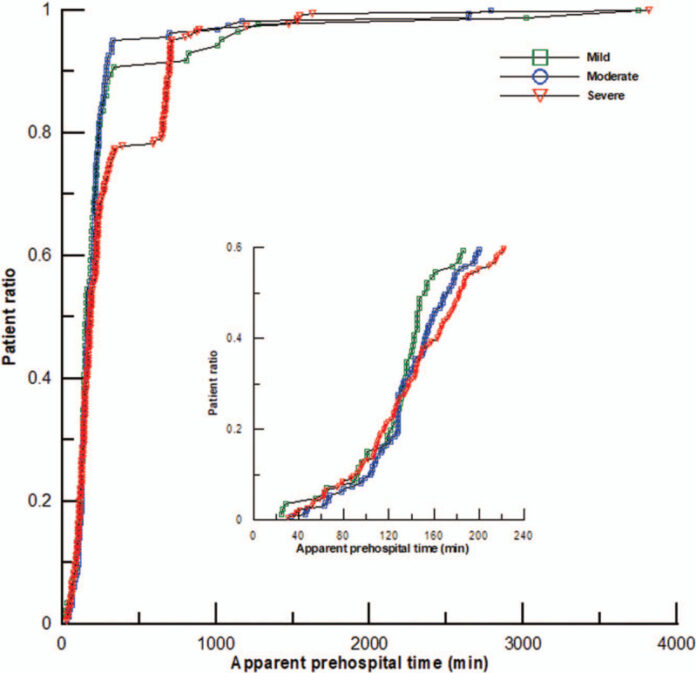Article Excerpt
Due to the policy of the local government, the central dogma of EMS response is the disaster area clearances as speedily as possible. Consequently, the patients in minor conditions occupied the resources of high-level emergency response hospitals in the initial stage; hence the severe ones had no choice but to divert to other medical centers. Moreover, a portion of the severe patients had relevant extended appPHTs. A reasonable inference is that the severe patients near the explosion site cannot move to the ambulances by themselves, and the pathways are all blocked by the patients and crowds. According to the OR results, inadequate emergency transportation will correspond to the diversion risk in severe patients. It clarifies that the EMS plan of “To see is to send” in this case should be improved, especially in an emergency transportation aspect.
In this case, we select the Park area to set up the EMRC since the in situ space is large enough to accommodate the casualties and the shortest distance between the disaster area and EMRC. The first-line ambulance transportation of mild and moderate patients can be saved for severe casualties, especially in OHCA cases. Moreover, severe patients can be transferred directly to the response hospitals without competition from the ED beds by moderate and mild patients. Since moderate and mild patients will get retained by EMRC, it can create extra time and space for response hospitals to release the patient surge pressure of an MCI.
Analysis
Once again, through this article we’re seeing a struggle to address all patients in a crisis. In an alarming manner, it’s plainly seen that severely injured patients have more apparent prehospital time (appPHT) as opposed to lightly or moderately injured patients. Ideally, the opposite should be true given that severe cases are mostly classified as severe due to their time sensitive nature. The article details the most likely explanation for this case is the lack of mobility that these severely injured patients to move through crowds/paths to arrive to an ambulance to then be sent to a location for help. This article focuses on a better triage setup for those who are severely injured. The two main components of saving these severely injured individuals seems to be an efficient mode of short term transportation to arrive to a vehicle like an ambulance or a medic station, and to make sure said medic stations are properly placed and aliquoted for severely injured vs moderately and lightly injured patients to stop one patient population from overrunning the other. Of course a third component to assure success is to properly triage said patients and correctly declare which patients need immediate care and which can wait.




